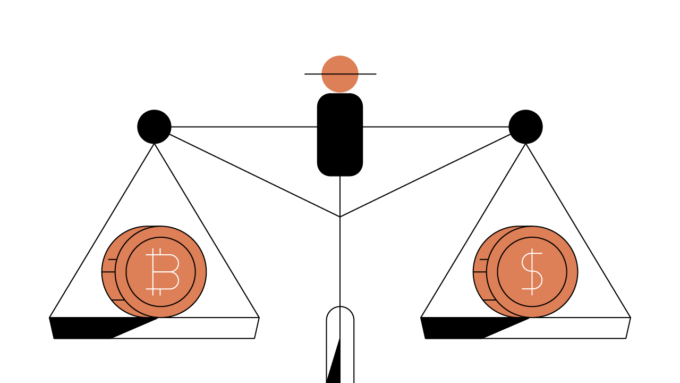One of the first objectives that entrepreneurs working in the digital age must tackle is payment. How can their customers pay for their product or service? In some cases, a company may also need to deposit money into a customer’s account. Quickly, financial demands can add up.
The rise of digital wallets has offered robust solutions for digital entrepreneurs. This tech allows users to pay by credit/debit card or even pay via a digital balance, as with PayPal and Venmo. However, blockchain and cryptocurrency are throwing a wrench into things for forward-thinking businesspeople.
In other words, companies want to stay on the frontiers of technology to run a smooth operation that’s seamless for users. To do this, they need to keep their ‘finger on the pulse’ when it comes to the latest payment solutions. Things can change rapidly and, as highlighted by crypto and NFTs, the learning curve might be steep.
A Modern Case Study
Let’s take a quick look at one of the most dynamic virtual payment spaces: online poker. For two decades, online poker has steadily grown in popularity. Remote gamers can compete against thousands of others straight from their couches, while poker sharks can sharpen their teeth as they prepare for regional qualifiers—including chances to play at the World Series of Poker.
But online poker sites must deliver a safe and quality experience for players. Today’s leading sites offer almost a dozen solutions for depositing and withdrawing funds. How do they do this? Some platforms offer downloadable software for users, which allows them to quickly and safely deposit or withdraw funds when playing real money games.

This means that the company can offer multiple resources. First, they offer fast deposits. Second, they offer account segregation and even deposit limits into the experience. Lastly, they make withdrawing a breeze, as the platform is secure and linked to a user’s account.
The NFT Potential
But what about platforms that want to branch out beyond Neteller and Visa transactions? The future once looked bright for blockchain finance, but those hopes have since guttered. But there’s still plenty of potential—especially when it comes to NFTs and how they can be applied to a variety of use cases.
Keep in mind that many are holding faithful to a future on blockchain—but others are holding out for ‘blockchain to go non-profit’. The idea here is to use blockchain for a local economy that’s based on trading rather than profiting. In these spaces, NFTs are part of a peer-to-peer network that’s based on a local currency.
The NFT, in this example, is the local currency. So, how does this apply to digital business? As we’ll cover below with in-game economies, an NFT could have local relevance and application in an economy. In this case, an NFT isn’t a CryptoKitty or a Kobe Bryant Slam Dunk from TopShot. Instead, it’s a liminal token that’s designed for a specific purpose and traded like currency. The idea is focused more around functionality rather than creativity.
Digital Currency vs. Cryptocurrency

NFTs have thousands of applications—and we’ve just skimmed the tip of the iceberg with the above discussion. But what about crypto? Is it actually worth it for virtual entrepreneurs to consider a future based on blockchain and Bitcoin—or will blockchain be more relevant as a way to trade NFTs?
Right now, the attention is focused on digital currencies. The greatest player in this game is cryptocurrency—but other groups are also getting involved. At its most basic, a digital currency is one that can never be withdrawn from an ATM into a physical form. Bitcoin is a digital currency as well as a cryptocurrency—but not all digital currencies are decentralized.
Going forward, governments and other centralized bodies will continue to create their own digital currencies. At the moment, some countries already use a central bank digital currency (CBDC), including Jamaica, Nigeria, and the Bahamas. As these become more mainstream, more consumers will expect to be able to use them for basic online transactions.
In-Game Currencies & Gamification
Above, we discussed the applications of NFTs in a local economy. The same applies for in-game currencies, which are used to purchase items, crates, special packs, and other digital in-game assets. Real money is used to deposit in-game points, coins, credits, or gold. Obviously, the vast majority of in-game currencies are used for major games and eSports.
League of Legends, for example, offers gamers Blue Essence and Riot Points, which can be purchased or earned through gameplay. However, these in-game currencies as a concept apply to more businesses than first meets the eye. In particular, they can be adapted for loyalty and rewards programs.

Imagine you run an online perfume store. If you want to reward customers with free items or discounts, you can ‘gamify’ the experience. This lets you engage your audience through small games, then capitalize on their exploits. Even Louis Vuitton has its own Louis mobile app, which connects gamers to unique rewards—and, of course, NFTs.
The Mega-Network
Some analysts are considering a future where in-game or hyper-local economies could expand and work together. In other words, imagine Louis Vuitton offers Louis players a type of coin for playing the game, then Balenciaga creates a similar app. Should the luxury brands partner together, then users would be able to apply those coins across different brands.
This would allow brands to create their own networks that trade NFTs, digital currency, coins, or other types of assets. The idea behind this is to minimize the number of withdrawals and deposits that users have to make. This lets them streamline a financial experience across multiple brands, adding to convenience, a sense of community, and a boosted or elevated brand message.
Additionally, it provides businesses with the opportunity to cross-promote. For example, one of Louis Vuitton’s most successful crossovers was with Takashi Murakami, regarded as Japan’s Andy Warhol. In the future, this type of collaboration might involve specialized NFTs. Specifically, Louis Vuitton could leverage its Louis app to partner with a Murakami platform. This way, fans of either the luxury brand or the artist would be exposed to a new venture.










